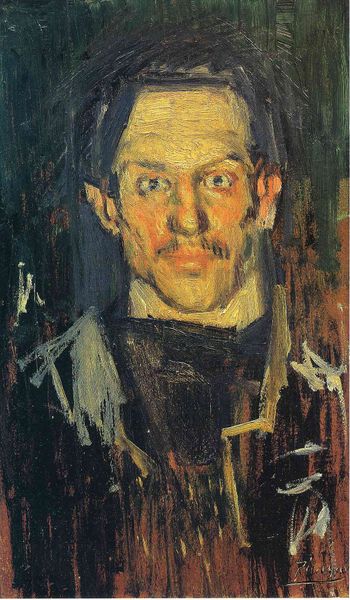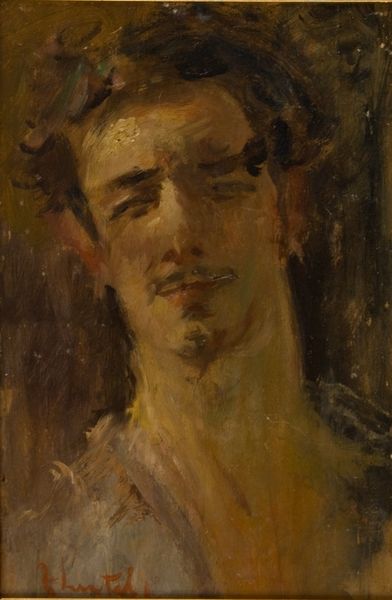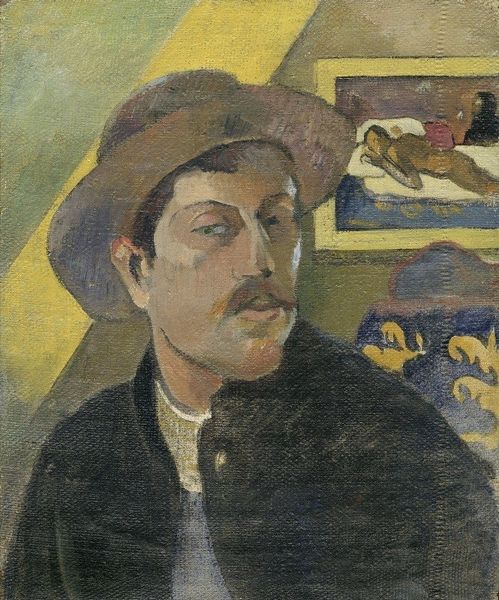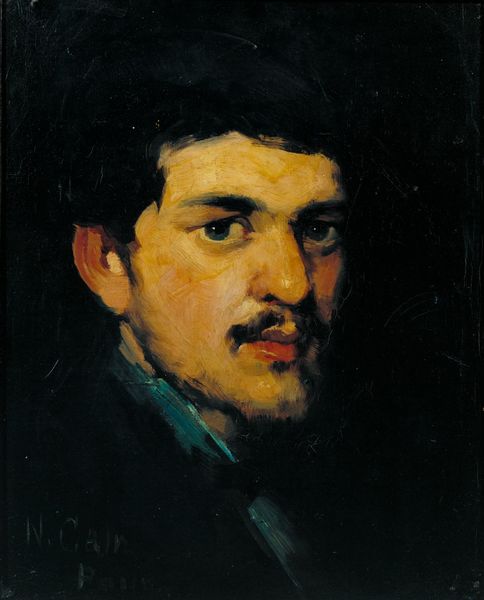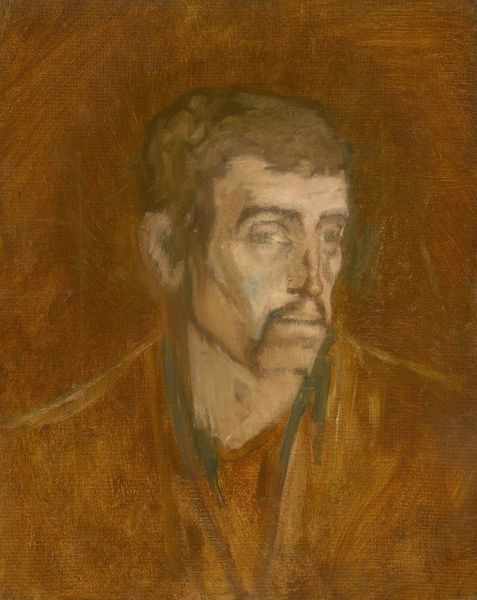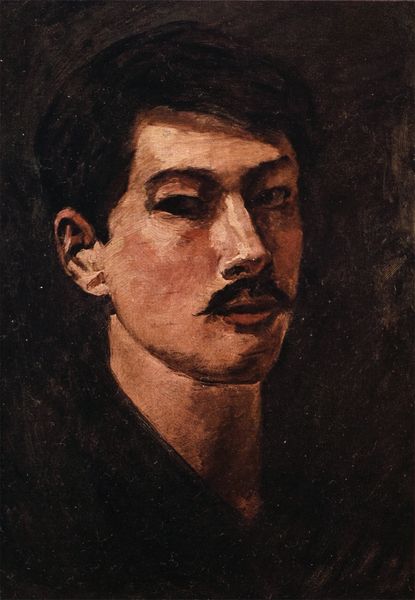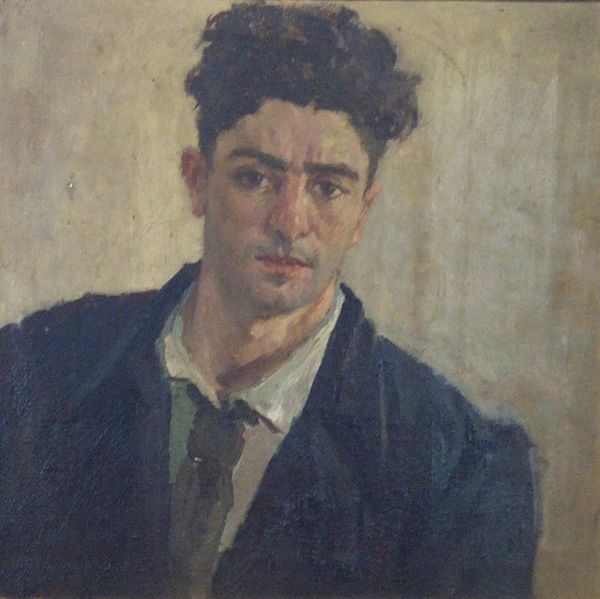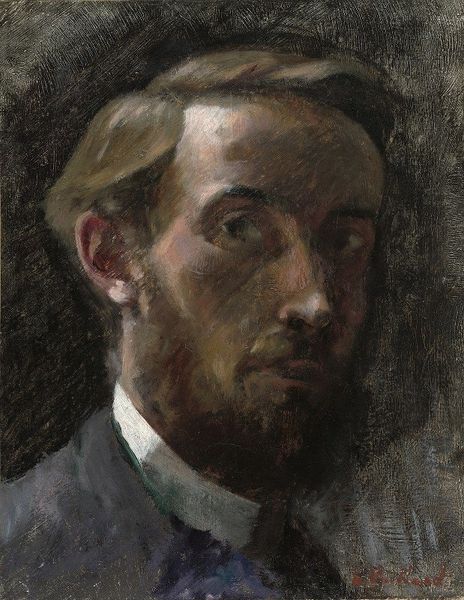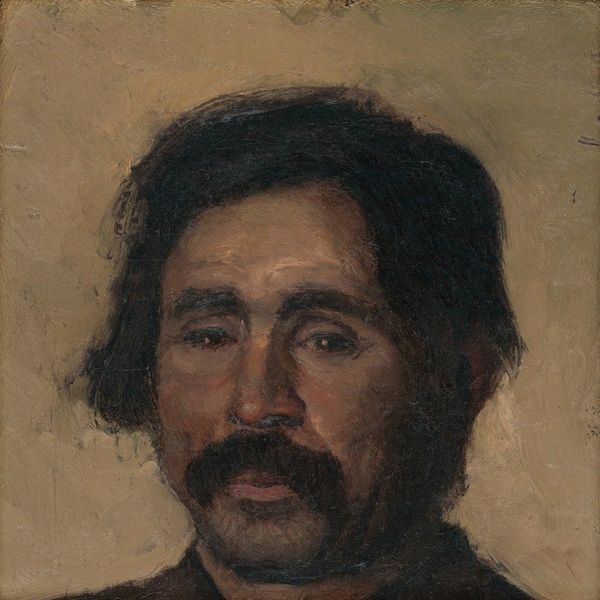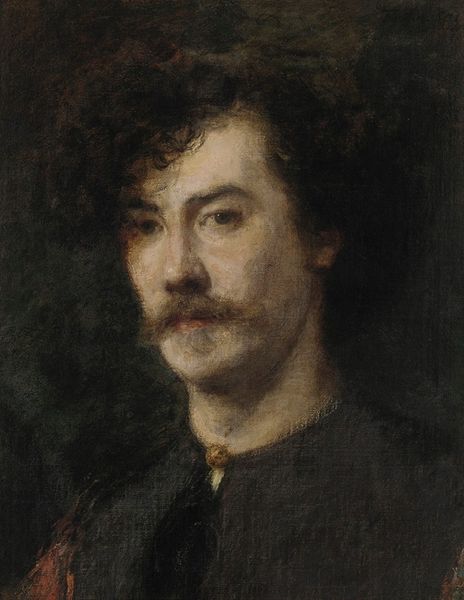
painting, oil-paint
#
portrait
#
self-portrait
#
low key portrait
#
portrait
#
painting
#
oil-paint
#
figuration
#
portrait reference
#
portrait head and shoulder
#
animal drawing portrait
#
portrait drawing
#
facial portrait
#
post-impressionism
#
portrait art
#
fine art portrait
#
digital portrait
Copyright: Public domain
Charles Laval painted this self-portrait in 1886, using oil on canvas. The composition is simple, with Laval’s gaze meeting ours head-on. The muted tones of the background contrast with the darker hues of his coat, drawing attention to his face. Laval’s brushstrokes are visible, giving the painting an unfinished, almost impressionistic quality. This technique was part of a broader shift away from academic precision towards capturing fleeting moments and subjective experiences. The formal structure of the painting, with its emphasis on color and texture, creates a sense of intimacy. It is as if Laval invites us into his personal space, challenging the traditional boundaries between artist and viewer. Notice the subtle interplay of light and shadow on his face. This is more than just a depiction of physical likeness, it represents the artist's inner state and contributes to the painting’s overall sense of introspective contemplation. Ultimately, the formal elements of this self-portrait work together to convey a sense of authenticity and emotional depth.
Comments
No comments
Be the first to comment and join the conversation on the ultimate creative platform.


